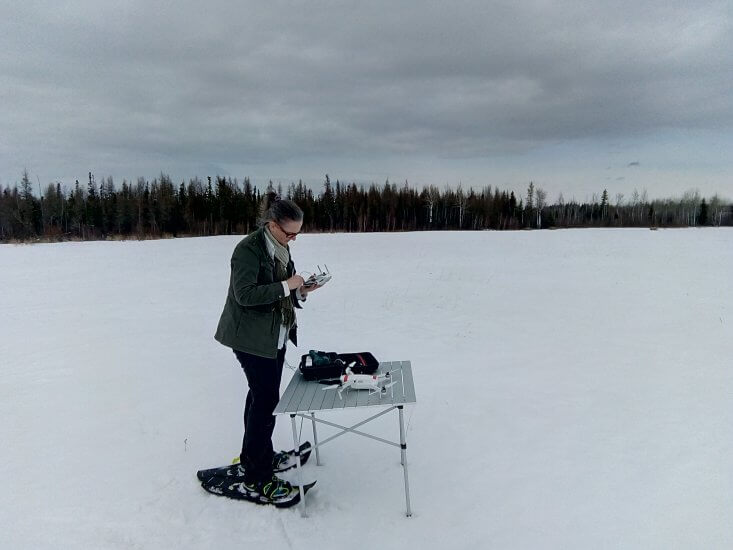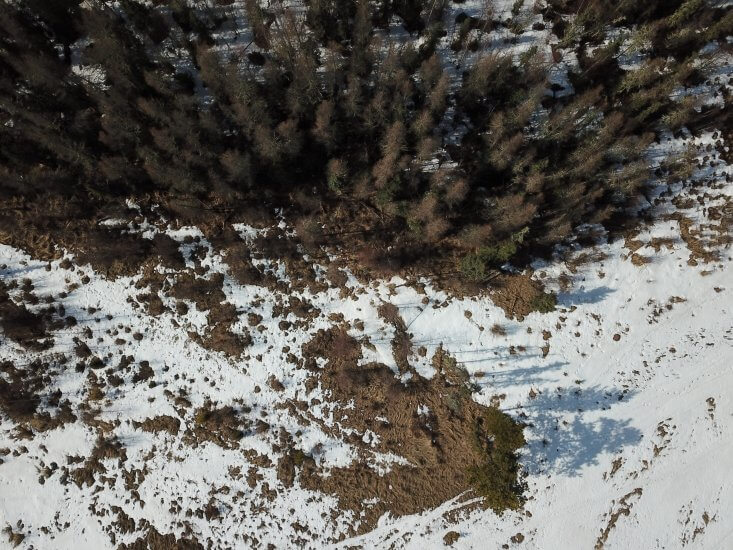AU researcher attracts international attention
The high-quality research done at the Athabasca University (AU) Faculty of Science and Technology attracts attention from academics the world over—and some jump at the opportunity to come to Alberta to work with us.
Dr. Frédérique Pivot, an assistant professor in physical geography, is one of those researchers who has attracted international attention. Her research focuses on remote sensing, including the use of unmanned aerial vehicles—also called UAVs or drones.
One project in particular that she’s working on is to use remote sensing and modelling to look at water availability in the Rocky Mountains.
Interest from India

Juna Probha Devi, a doctoral student from India who is studying similar issues related to snow cover in the Eastern Indian Himalayas, applied for and received a Shastri Research Student Fellowship grant to travel to Alberta for six months to work with Pivot.
She said she’s particularly interested to learn about how Pivot uses drones to conduct her research, and hopes to learn skills she can apply to her own research, which focuses on the impact of snow cover and climate change on the tourism sector and the livelihoods that depend on the sector.
“I expect to get an opportunity to introduce myself to the Canadian drone industry and learn about the mission planning and drone operations, as well as pre-processing of drone imagery,” she said. “Drones are being regarded as the third generation of platforms generating remotely sensed data. To get exposure to this forefront technology will be highly advantageous to me.”
Devi explained her thesis work is based on studying the Eastern Himalayan snowpack, the impacts of climate change, and the variability of snowmelt runoff as it impacts the distribution and availability of water in the region.
Pivot said her own research is a natural fit with Devi’s research, and she expects to be able to support Devi in her work to develop and test models and simulations to help enhance her understanding to the snowpack in northern India.
Overcoming challenges

The challenge in India is that much of the snow is in remote and otherwise difficult-to-access areas, making it difficult if not impossible to take on-the-ground measurements. Instead, Devi is working to develop models to predict snowmelt runoff and hopes to use drones to gather the information to put into those models.
“This is actually my specialty,” Pivot said. “I did my PhD on the remote sensing of snowpack, specifically using microwave satellite information to basically see through clouds, so I thought it would be good to introduce (Devi) to those kinds of remote sensing data and if I help her to collect data for the region she wants to work.”
Being able to gather one-the-ground data in Canada, and test the models using that data, Pivot said Devi will be able to return to India and deploy that model with a higher level of confidence than she might otherwise have.
But while the opportunity to work with graduate students is always positive, Pivot said she’s especially pleased to be able to help mentor a woman in a STEM field.
“I’m really happy when I get to work with women students, because my field is still relatively male-dominated,” she said. “In geography, most women tend to go into human geography more than physical geography, and when they go into physical geography they tend to go more into the least physical parts of physical geography.”
For more information about Pivot’s work, visit her staff page at AU. You can also learn about physical geography courses available at AU, and register to start your own educational journey!